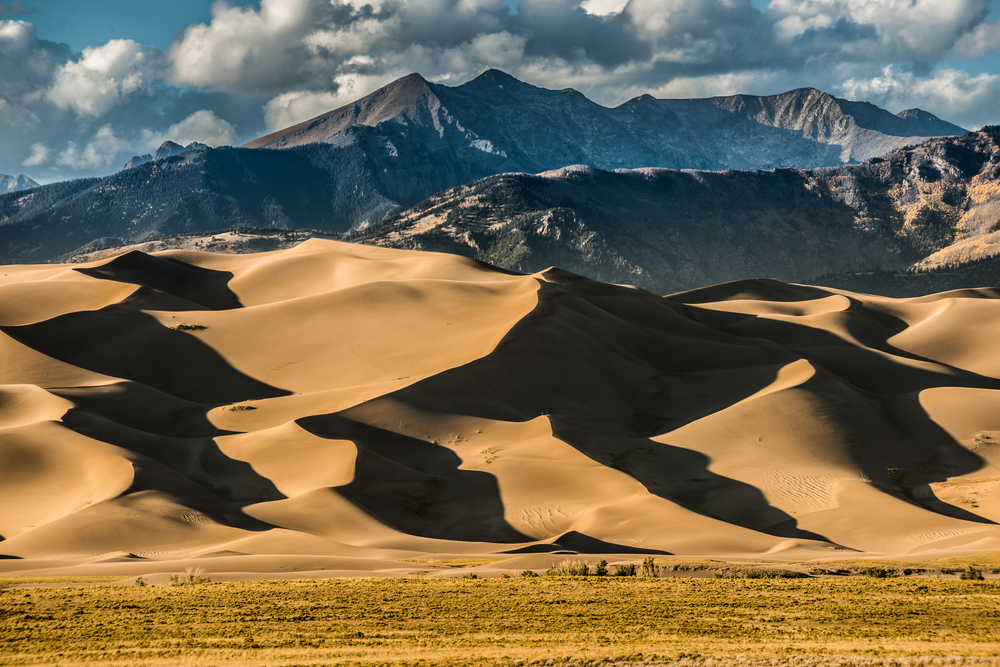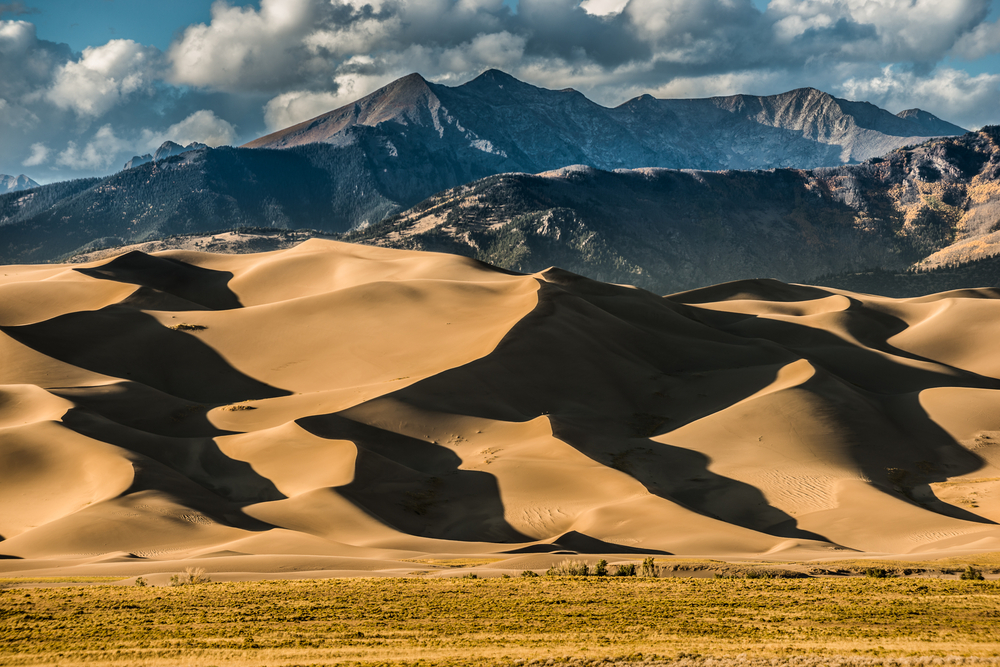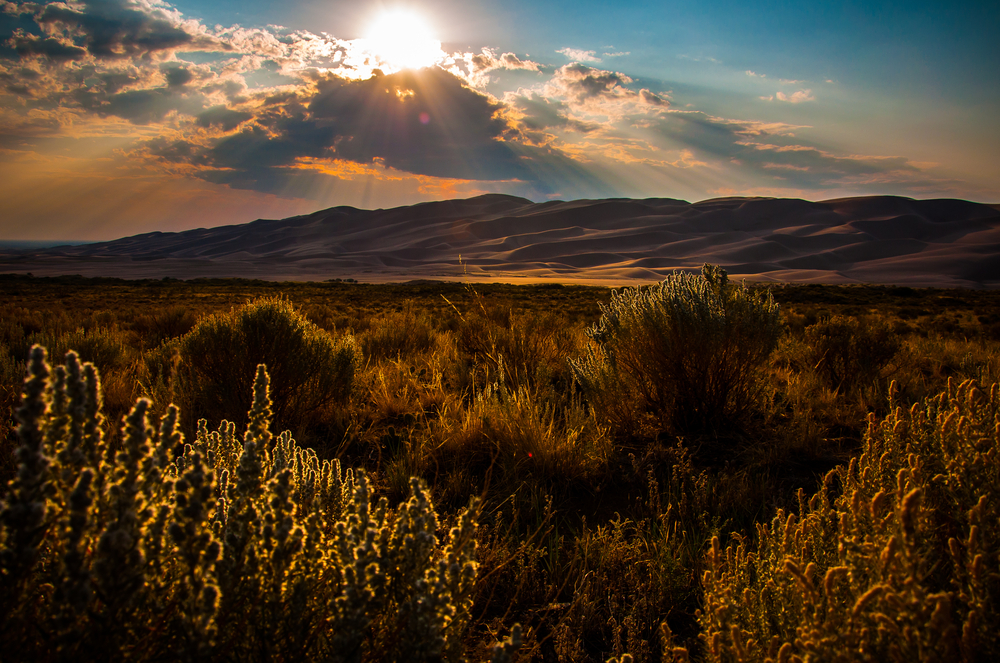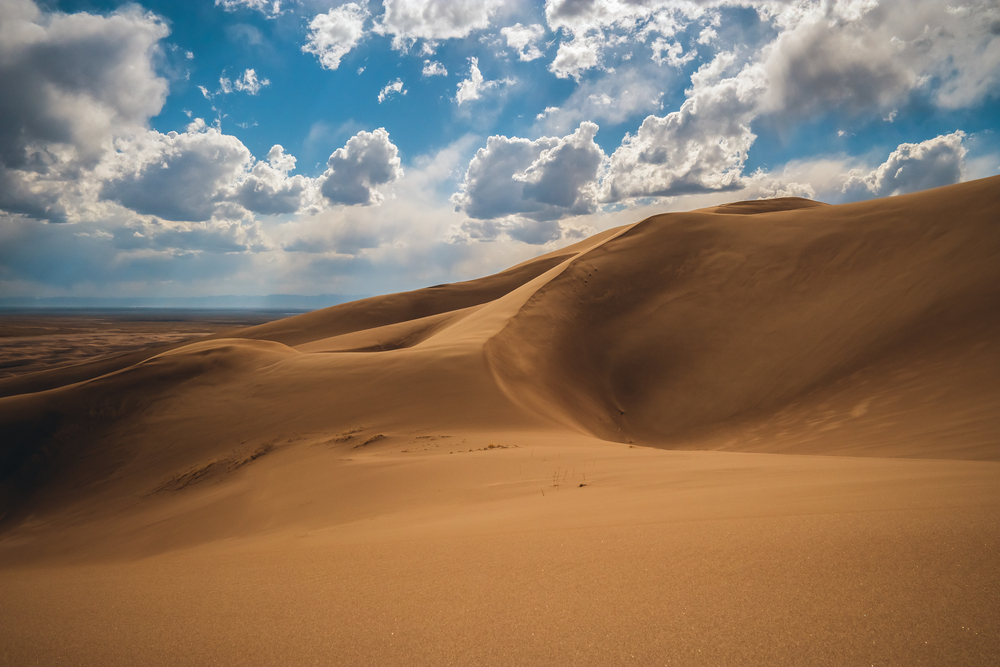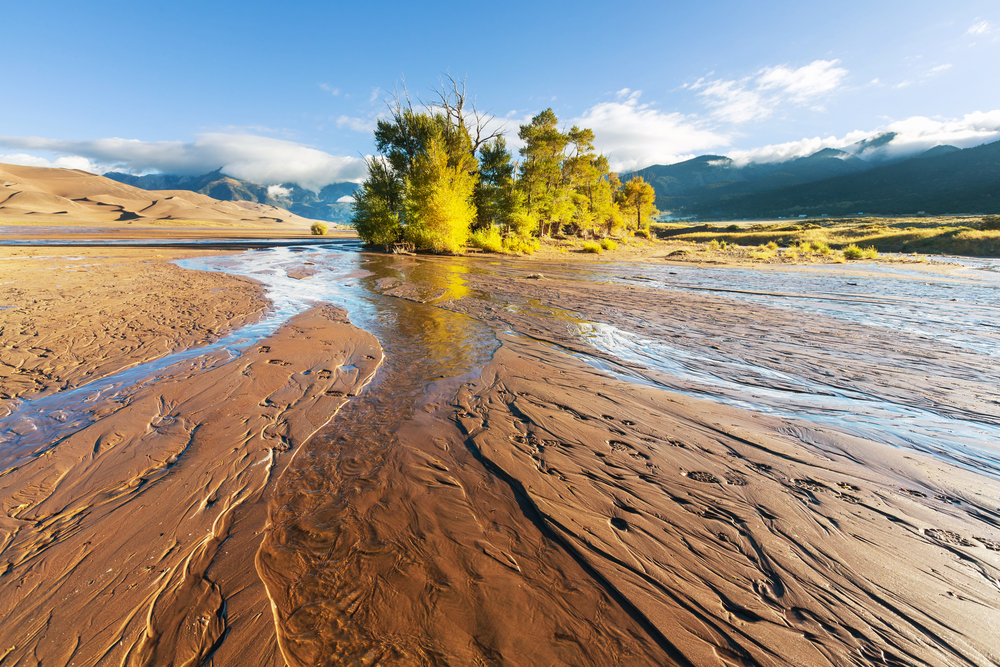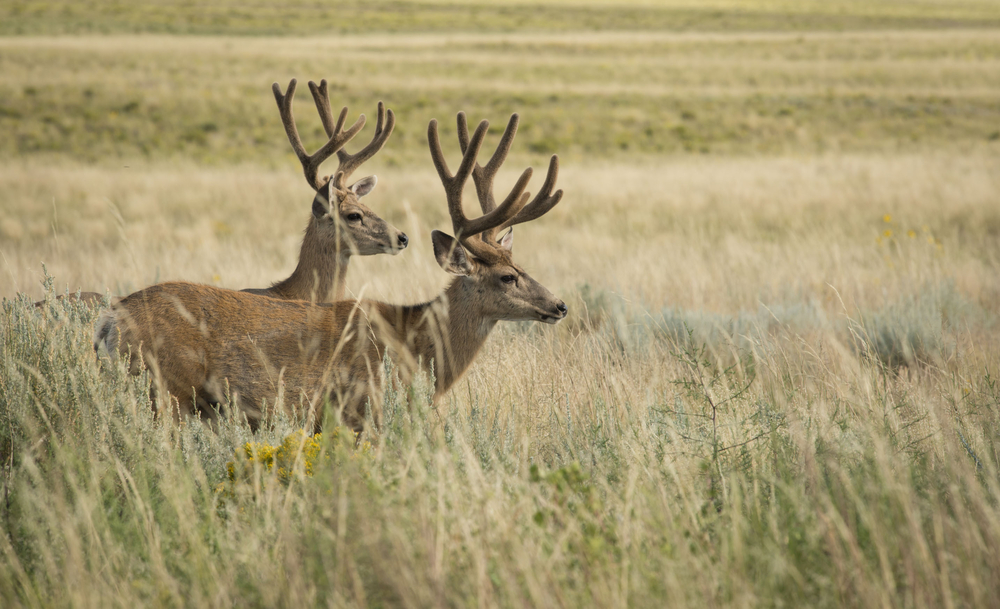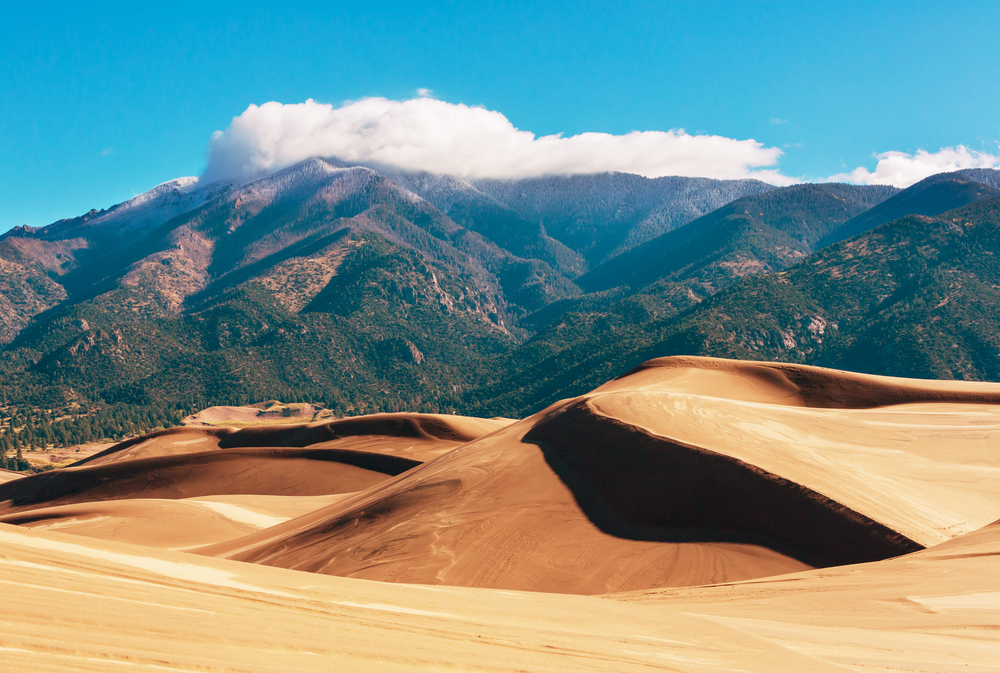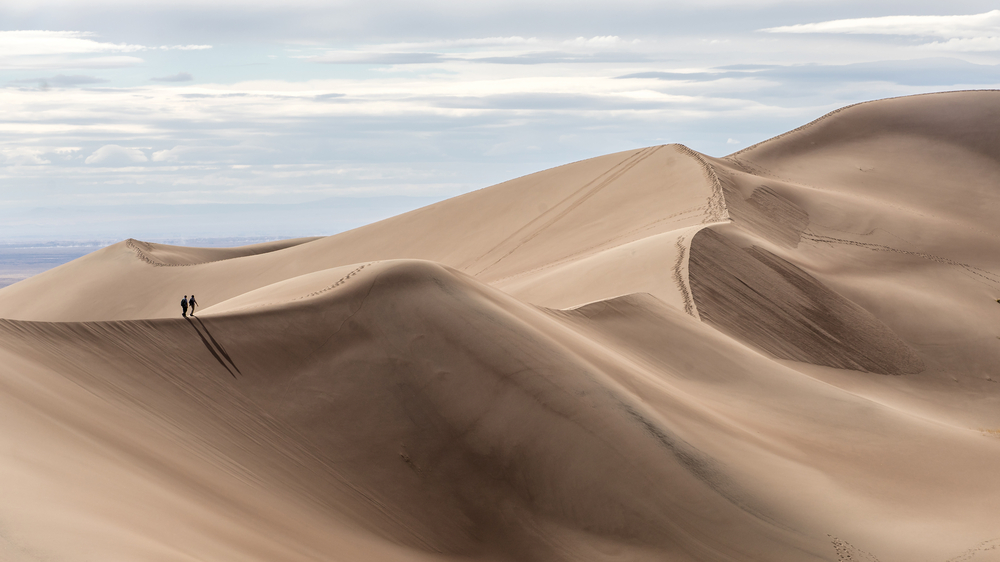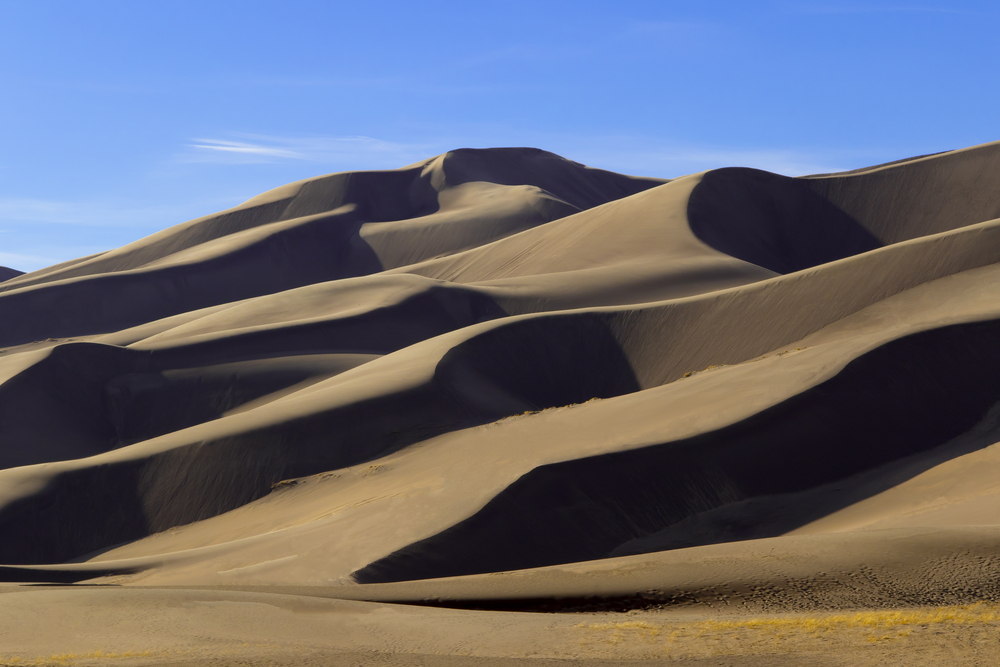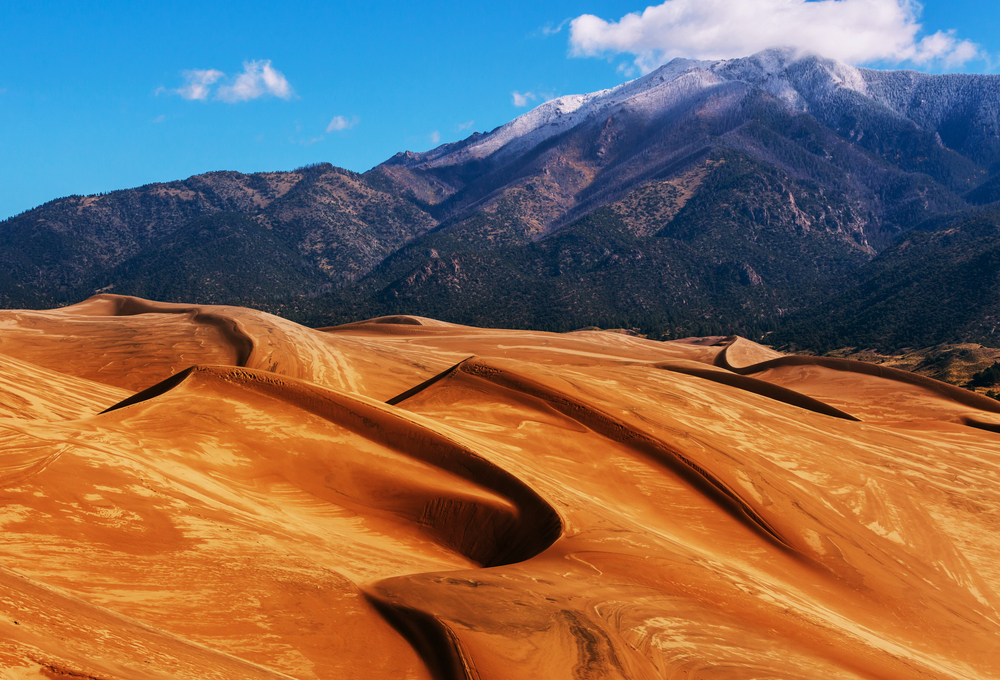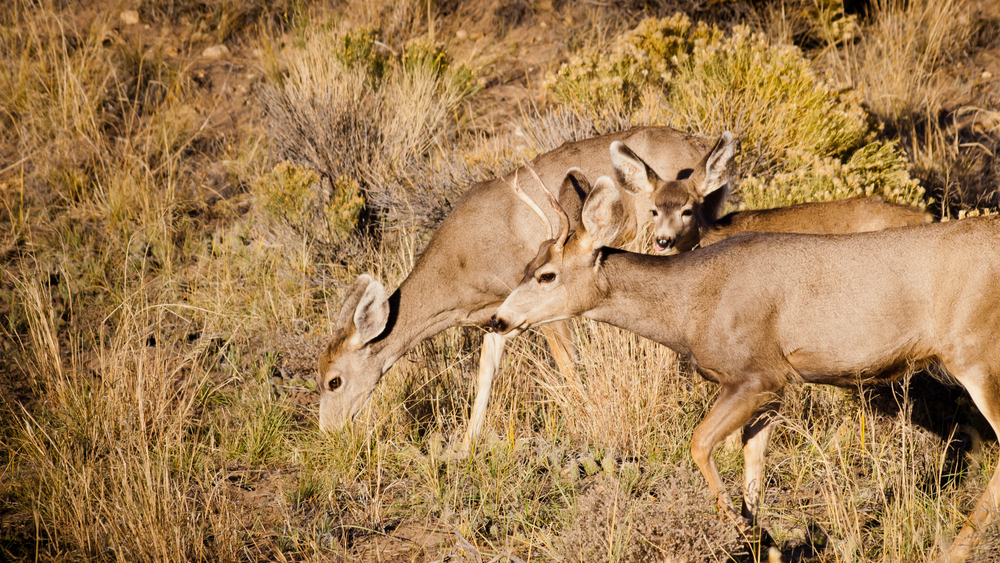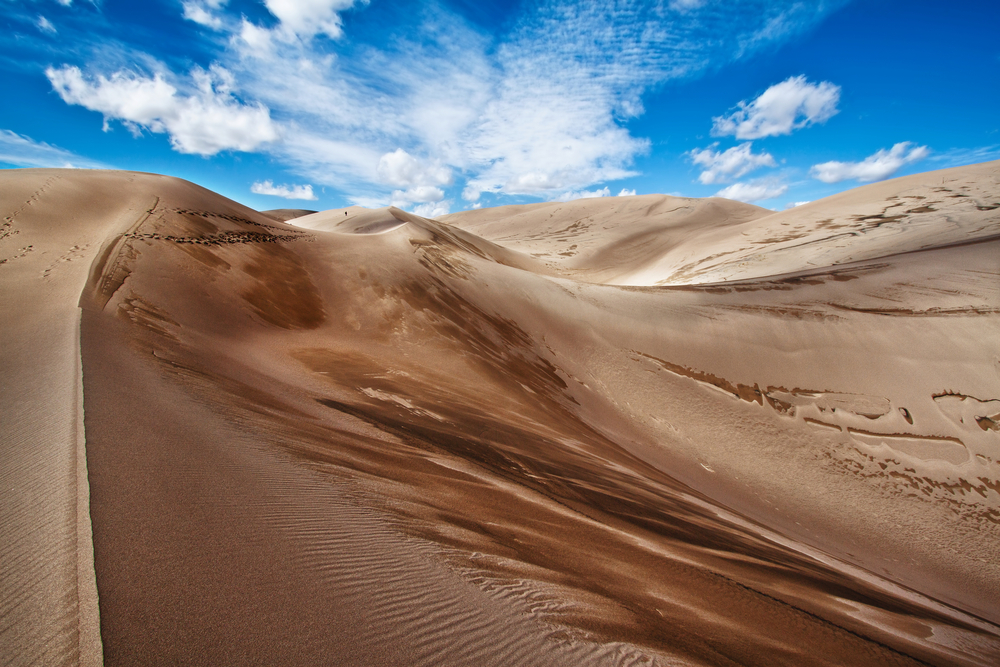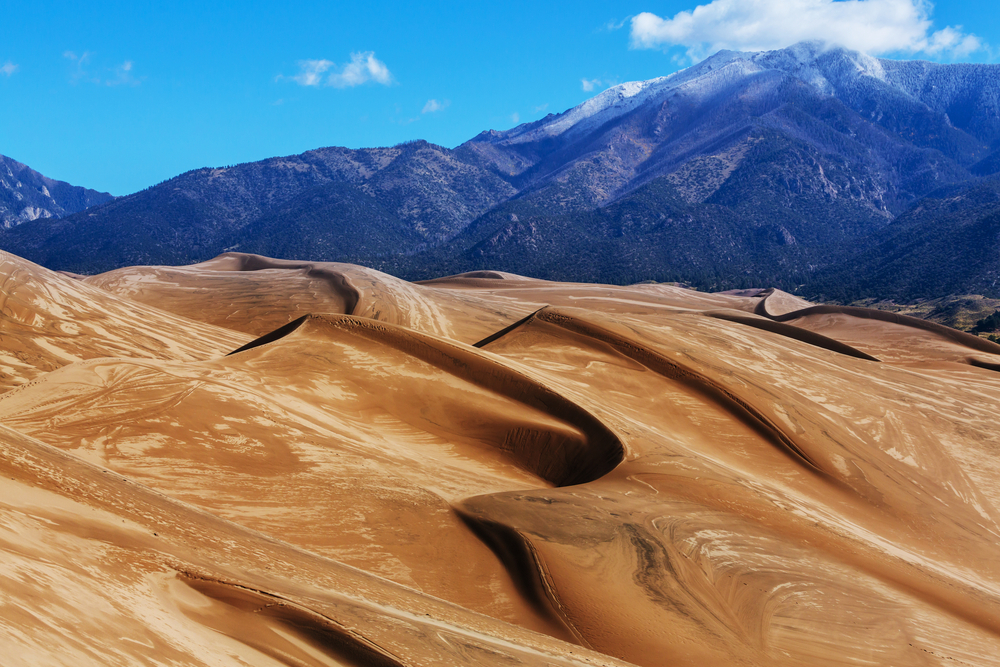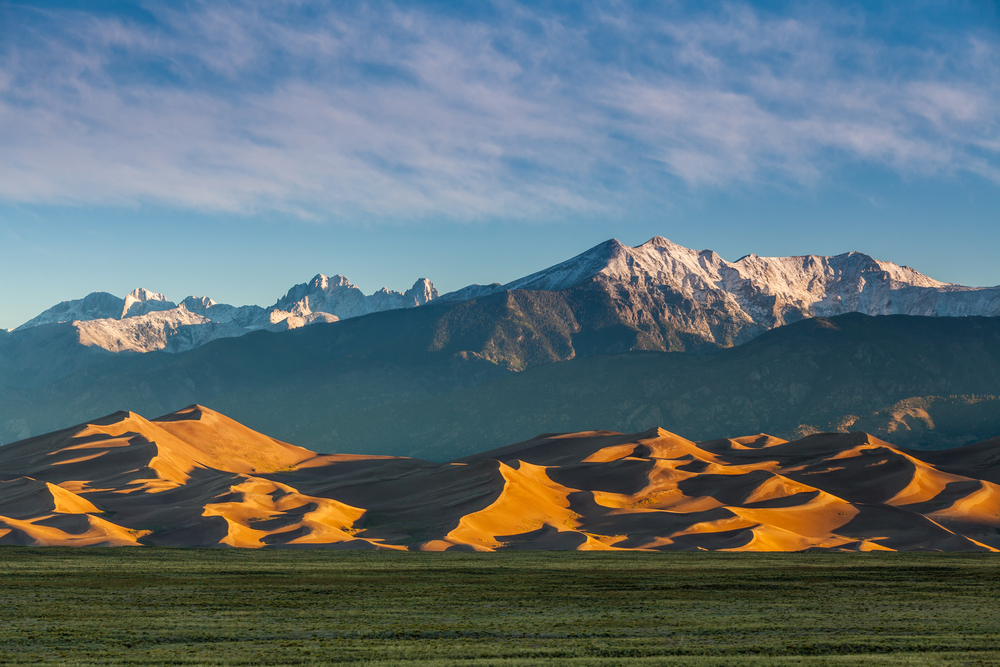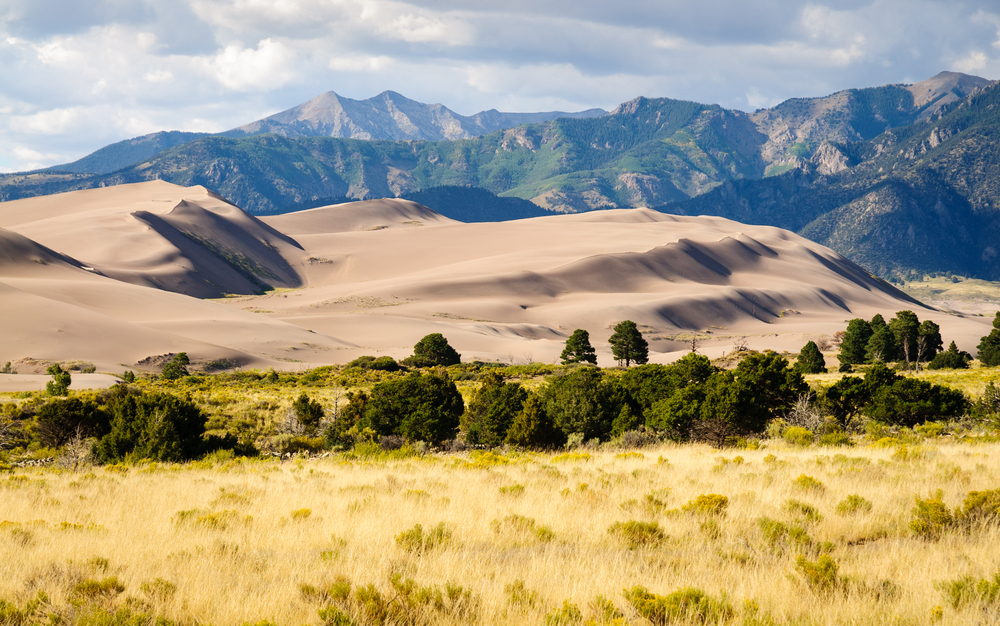Great Sand Dunes National Park is located in the south-central part of Colorado of the United States. The park covers an area of 232.9 square miles (603.1 sq km).
The massive sand dunes of the San Luis Valley reach heights of 750 feet (229 m). Star Dune is the tallest dune in the park. Namib-Naukluft National Park in Nambia is reported to have the largest sand dunes of any national park in the world.
One of the most amazing things about the sand dunes of Colorado is the surrounding landscape that features snow-capped and forested mountains, rivers, streams, and alpine lakes, and groves of trees and vegetation. The sand dunes which most people associate with a dry arid desert seem to appear out of nowhere.
The diverse ecosystem of the area includes alpine tundra, subalpine forests, montane woodland, and riparian zones. However, the sand dunes are the pinnacle attraction of the park. There are five different types of dunes in the park including barchan dunes, parabolic dunes, reversing dunes, star dunes, and transverse dunes.
Great Sand Dunes National Park is home to the tallest sand dunes in North America. Approximately 30 square miles (78 sq km) of the area is covered in these massive dunes. The accumulative sand is believed to total around 1.2 cubic miles (5 billion cu m).
The majority of the sand is accounted for by the flat area west of the dunes. This sand is what feeds the dunes which get built up from wind blowing across the sand flats. There are two spring-fed creeks along with snow-fed creeks that traverse across the park in some cases creating alpine lakes.
The majority of vegetation occurs outside and surrounding the dunes. Douglas fir, pinyon pine, Rocky Mountain juniper, and ponderosa pine are some of the common tree species. There are numerous flowering species that blanket the area around the dunes during the late spring and early summer.
A ranch within the park houses 1,500 bison which makes for a key wildlife encounter. Other species that leverage the grasslands and alpine tundra include badger, beaver, black bear, bighorn sheep, cougar, elk, mule deer, and pronghorn. The astounding golden eagle and exquisite golden eagle are two of the more captivating of the over 200 species of birds.
An unpaved road meanders across Medano Creek almost 9 different times and traveling through 4 miles (6.4 km) of thick sand. The road is accessible to four-wheel-drive vehicles. This is an adventure that allows people to also experience and sees different perspectives of the sand dune wilderness.
Photos
Things to See
Great Sand Dunes National Park Trails
There are several trails in the park and hiking amongst the dunes is permissible. However, you are warned that temperatures can be excessive. Plan for drinking lots of water.
Sources
- Alamosa, The Great Sand Dunes National Park, https://www.alamosa.org/things-to-do-in-alamosa/alamosa-scenic-wonders/387-the-great-sand-dunes-national-park-preserve, retrieved June 2020.
- All Trails, Best Trails in Great Sand Dunes National Park and Preserve, https://www.alltrails.com/parks/us/colorado/great-sand-dunes-national-park-and-preserve, retrieved June 2020.
- Britannica, Great Sand Dunes National Park, https://www.britannica.com/place/Great-Sand-Dunes-National-Park-and-Preserve, retrieved June 2020.
- Colorado, National Park Profile: Great Sand Dunes National Park & Preserve, https://www.colorado.com/articles/national-park-profile-great-sand-dunes-national-park-preserve, retrieved June 2020.
- My Colorado, 10 Things to Do in Great Sand Dunes National Park, https://www.mycoloradoparks.com/things-to-do/things-to-do-great-sand-dunes, Retrieved June 2020.
- National Geographic, Complete National Parks of the United States, National Geographic Publishing, Washington DC.
- National Geographic, Guide to the National Parks of the United States, National Geographic Society, 2003.
- National Geographic, National Parks of North America, Canada-United States-Mexico, National Geographic Society, 1995.
- National Park Service, Great Sand Dunes, https://www.nps.gov/grsa/index.htm, retrieved June 2020.
- UNESCO, White Sands National Monument, https://whc.unesco.org/en/tentativelists/5254/, retrieved June 2020.
- Visit the USA, Great Sand Dunes National Park and Preserve, https://www.visittheusa.com/destination/great-sand-dunes-national-park-and-preserve, retrieved June 2020.
